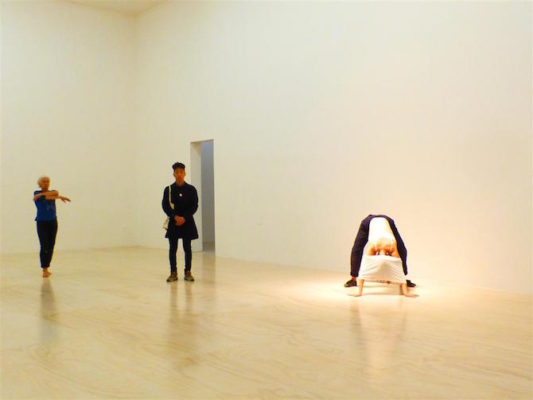Search
To search for an exact match, type the word or phrase you want in quotation marks.
A*DESK has been offering since 2002 contents about criticism and contemporary art. A*DESK has become consolidated thanks to all those who have believed in the project, all those who have followed us, debating, participating and collaborating. Many people have collaborated with A*DESK, and continue to do so. Their efforts, knowledge and belief in the project are what make it grow internationally. At A*DESK we have also generated work for over one hundred professionals in culture, from small collaborations with reviews and classes, to more prolonged and intense collaborations.
At A*DESK we believe in the need for free and universal access to culture and knowledge. We want to carry on being independent, remaining open to more ideas and opinions. If you believe in A*DESK, we need your backing to be able to continue. You can now participate in the project by supporting it. You can choose how much you want to contribute to the project.
You can decide how much you want to bring to the project.

I begin quoting Elizabeth Grosz, “The ever-changing movements that constitute my subjectivity naturally function in parallel with those ever-oscillating frequencies or differences, of light, sound, and material connection that constitute the material object, enabling me to act on and with it.”
The ever-changing formulations of the id, those simultaneous and multiple ways of being, acting, listening and seeing, are generated in strict relation to their surroundings. Human and non-human, object and subject, subtly exchange the positions defined by a sensorial performativity. Atomised events and quasi-events awake a unique rhythm where the movements originated alter the compositions, sensibilities and perceptions that one has of others and of one’s own body, identity and gender. We could trace the genealogies where these relationalities developed and the way certain specificities in the tonalities of action were defined, coming to the situation as a node of encounter, a process of subjectivity, a mobile ecology in search of difference as Erin Manning would say.
In the autumn of 1960 an exceptional amalgam of creators attended the composition classes that Robert Dunn gave in the studio of Merce Cunningham. Outwith the class, this group met up in the Judson Church, giving rise to one of the most brilliant moments in the hagiography of art. Fifty years ago, Yvonne Rainer at that time a young 31 year old wrote what has been called the No Manifesto, a programmed list in which she negated the spectacle – two years before the publication of Society of the Spectacle by Guy Debord -. Amongst other negations was Rainer’s rejection of contact with the public. In fact, in Trio A there is a moment when the performer has to turn her head precisely so as to avoid encountering the public’s gaze. The performer acquires an objecthood, which although stemming from a combination of movements of the dance and the everyday, is constituted as an entity apart, self-generated, impersonal and isolated. Experiments with variations of the object lead us to observe another piece that is also turning fifty, the L Beams by Robert Morris. Here the object is taken in its moment of appearance, overcoming the logic of a closed structure and extending itself in a manipulation of the moment, where the one that looks and the space (institution) that houses it are altered in a specific experience.
Although the introduction to the object, within a choreographed atmosphere, had already been made palpable in the European avant-garde. This relation was precipitated at the beginning of the sixties with the task performances (in which the action was determined by an object, be it moving some mattresses, or completing a score configured out of a ramp and some strings) and with the intersection between sculpture and body (in the concert number 13 of Judson Church, the performers interacted with a trapezoidal, metal structure created by Charles Ross). To these two formulations of the performatic object, as both autonomous and expanded, a further coordinate is added, one that derives from the latter, the inclusion of the spectator. Just one example: in the presentation of Trio A and its many variations in a theatre in the East Village in 1968, Rainer at intervals during the performance had the stalls fully illuminated. Rainer was perhaps familiar with the example from 1924 that Rosalind Krauss mentions in Passages in Modern Sculpture, or maybe not, and came to the same conclusion as Picabia when he illuminated at full blast the public that attended the Relâche dels Ballets suédois. The light blinds and assaults the spectators, negating them in this way any possibility of distancing themselves.
The expanding wave of minimalism has led to the reformulation and reconsideration of notions of scale, presence and materiality in a variety of current positions. The incorporation of the public in a performatic dimension has been in recent times a way of altering exhibitions models and entering into the production of intimacy. The production of affection and the elimination of any barriers between performer and public could seem more a recourse than a culture of customisation. However, it is in the subtlety of the possible variations where we find a modus operandi that goes that bit further and makes us consider the forms in which we live and relate to each other in this world (in crisis). The exhibition as a laboratory for life.
Retrospectiva by Xavier Le Roy is a vindication of the work of the performer as well as an understanding the revision of the work of a choreographer by extending its production in relation to that of the dancer. It is also a way of attending to the public and the anecdotes and episodes that have slowly configured who we are at that point of our life. At the same time as the performer unfurls her memory, the visitor stops being a visitor and enters into an ambiance where their subjectivity is shaped by the fluctuation between interior and exterior. A large, fragile Proustian madeleine through which movement and identity expand indefinitely, transforming everyday spaces.
Units of time altered in a sensorial immersion could also define This Variation by Tino Sehgal. In the dark space of dOCUMENTA(13), there are songs, confessions and reflexions that lead to a questioning of the productive economy in a situation that is invisible in both its presentation and transmission. Sehgal’s economical proposal vindicates immateriality and the transformation of acts instead of materials and brings with it a subtle social experiment. Beyond the artistic values it generates, the seduced public, blind and bemused, seek with their hands in the space to find echoes of who they could have been, as in the ersatz memory captured by Enrique Vila-Matas..
Following these performativities of the memory there is yet another example that could orientate us: Timelining presented by Gerard&Kelly last spring in the Kitchen. This exercise stems from the present moment – determined by the entrance of visitors to the gallery – and moves backwards in time. A pair of performers, with personal ties, define a circular trajectory by walking round together, exchanging their memories until the date of their birth. The temporality, the intimacy and the relation exercised from the queer makes possible the emergence of a personal history intermingled, in contact from the side, countering the before and after, so in tune with notions of progress and official narratives.
These live materialities acquire the traits of autonomous and expanded objects. The scores include the visitor, who enters into an ambiance where the choreography does not impede spontaneity. The use of languages as another channel of connection exists with the nuance of being similar to sound, intelligible but not definitive for the experience at stake. Person-specific is this double direction, where performer and visitor – for lack of any better terms – imbibe a sensitive cartography dedicated to both, where affections and intimacies are coordinated to make the individual the principal sphere for the transformation of the everyday, that changes and acts by imagining collectives through the radical difference of the multiplicity of being.

Xavier Acarín is fascinated with experience as the driving force of contemporary culture. He has worked in art centres and cultural organizations both in Barcelona and New York, focussing in particular on performance and installation.
"A desk is a dangerous place from which to watch the world" (John Le Carré)